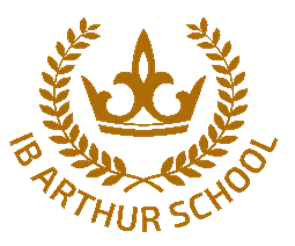The Lower Secondary School (LSS) starts from Year 7 to Year 8. IB Arthur School is authorised for Cambridge Lower Secondary Education. The Cambridge curriculum is recognised globally and it provides connectivity from primary to the lower secondary. The curriculum also promotes experiential and inquiry-based activities and provides learners with the academic skills needed to become independent learners. Using the Cambridge curriculum allows for continuous assessments to monitor child development.
LSS learners are assessed through homework, class test and end-of-term assessment. Teachers meet with parents to review learners’ progress twice in a term (i.e., mid-term and end of the school term).
The maximum class size is 25. We believe that keeping classes small allows our teachers to truly understand how each student learns best. Small class sizes allow us to get to know all of our families well and develop close partnerships between school and home.
IB Arthur Lower Secondary School (LSS) programme employs the Cambridge Lower Secondary Curriculum, which provides learners with a broad, progressive and balanced education. Learners are thought the following subjects:
English
English focuses on four areas: reading, writing, speaking, and listening. Learners learn how to communicate effectively across a variety of information, media, and texts, and aim to become confident communicators, avid readers, and writers who use the written language clearly and creatively for a variety of audiences and purposes.
Mathematics
Math at this level is divided into advanced numeracy, algebra, geometry, measurement, statistics, and probability. Learners acquire a comprehensive understanding of principles, patterns, systems, functions, and relationships, and become good at calculations.
Science
Learners acquire practical skills essential for thinking scientifically and
explaining the world. The curriculum covers biology, chemistry, physics, earth and space, thinking and acting scientifically, science in context, and more.
Arts and Design
Art & Design provides learners with a space for self-expression and arouses imagination, creativity and innovative abilities. Learners acquire the skills necessary to express creative ideas and communicate with greater impact.
Technology and Robotics
Learners apply their knowledge in mathematics, science, computing, and arts to design and produce products that solve real-world problems. The engineering and technology curriculum aims to equip learners with creative skills and technical, hands-on expertise to successfully participate in an increasingly developing
technological society.
Computing
In information and communication technology, learners develop coding skills in text-based programming languages such as Python, Web Design, and Database to understand how programming and logical thinking are helping local and global industries.
Physical Education and Sports
Learners develop skills through age-appropriate exercises, games, team sports, etc. Learners are trained to develop a deeper understanding of sports concepts, teamwork, personal responsibility, rules, tactics, strategies, etc., and gain confidence and control. Learners are also trained to play respectfully and responsibly, properly and safely, and understand a healthy and active lifestyle.
Music
Through singing and playing musical instruments, students develop the knowledge, skills, and attitudes necessary to contribute and cooperate with purpose and expressively. Learners develop creative skills that will be useful in various aspects of future learning and development.
Global Perspective
Learners are introduced to different issues, perceptions and contexts in the world.
The subject covers a variety of global issues, including disease and health,
migration, belief systems, conflict and peace, demographic change, sustainability, poverty and inequality, employment and livelihood, biodiversity and ecosystems, law and crime, education for all, culture and identity, fuels and energy, food and agriculture, globalization, trade and aid, transportation and infrastructure,
human rights, language and communication, and the digital world.
French as a second language
Learners are introduced to listening, speaking, reading and writing skills including translation-with varied activities in interesting, real-life contexts.
There is a regular focus on sound-spelling to enable accurate pronunciation and
| Time | Activity | Clarification |
|---|---|---|
| 07:30 am – 08:30 am | 1st Lesson | 60 minutes is allotted for the first lesson. |
| 08:30 am–09:15 am | Breakfast | The breakfast menu is shared with parents and children with dietary allergies are given special meals. |
| 09:15 am–10:00 am | 2nd Lesson | 45 minutes is allotted for the second lesson. |
| 10:00 am–10:45 am | Supervised Learning | Teachers assist learners in going through their reading assignments and take tests to assess their level of understanding. |
| 11:00 am–11:45 am | 3rd Lesson | 45 minutes is allotted for the third lesson. |
| 11:45 am–12:30 pm | Supervised Learning | 45 minutes is allotted for the second session of supervised learning. |
| 12:30 pm–13:15 pm | Lunch | Lunch is served at 12:30 pm. The lunch menu is changed every school term. |
| 13:15 pm–14:00 pm | 4th Lesson | 45 minutes is allotted for the fourth lesson. |
| 14:00 pm–14:45 pm | 5th Lesson | 45 minutes is allotted for the fifth lesson. |
| 14:45 pm–15:00 pm | Closing Time | Learners congregate at the Time Hall to eat their snacks and receive special announcements. |

